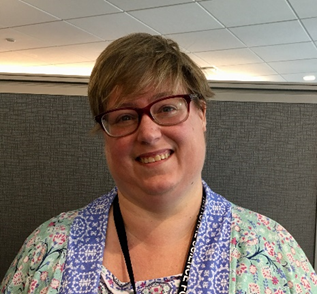
What were you doing before you came to the NSF?
I am a staff scientist at the Carnegie Institution for Science, Department of Plant Biology, which is a full-time research position, and I have a courtesy appointment as a Professor in the Department of Biology at Stanford University. I mentor both graduate and undergraduate students, collaborate with several faculty, and teach a range of courses.
What attracted you to work for the NSF?
Well, a number of things. I have been funded for most of my career by the NSF. NSF support allowed me to get back into research (after several years in India) and to develop several interdisciplinary projects. I felt this was a good time in my career to use my experience to help identify the most innovative science. Being a rotator allows me to explore the complex funding landscape, which may help me better develop future research projects. I also think strong interactions between scientists and funding agencies can bring in new ideas.
What was your first impression of the NSF? Has this impression changed since you began serving as a rotator?
I came in the day before the start of a panel, which was a bit overwhelming, but prepared me for what lies ahead. I was struck by the collegiality among the Program Directors and the professionalism of the staff. If anything, I am now even more impressed because I realize that everyone is trying to do their best, under sometimes challenging circumstances.
What personal goals would you like to accomplish while at the NSF?
I am deeply immersed in my own research, but I have become more curious about how all the pieces of the foundation fit together and how policies and directions are decided. That’s hard to see from the “outside”, and I have already been able to get a better sense by attending seminars, retreats, and meeting people. I also felt this experience would allow me to decide whether or not I could make a difference and be happy in a longer term position at the NSF or one of the other funding agencies in the latter part of my career.
What has surprised you most about working at the NSF?
What surprised me most are the various opportunities that exist at the NSF if you can take time out of a busy schedule. I’ve been able to meet academics and Program Directors from different fields, talk to young scientists about their career goals, and attend several talks – all in the first few months! I have also been surprised at how much organizational flux there is with new people joining and others leaving; yet all the programs still run efficiently.
What are some of the challenges of serving as a rotator?
So far, the challenge has been learning the ropes (software, processes, etc.). In the future, I see the bigger challenge to make the best funding decisions. But in both cases, the fact that there are several experienced Program Directors who are always willing to answer questions and discuss issues is a huge help. This role is very different from being an established academic where one is familiar with the territory.
What would you tell someone who is thinking about serving as a Program Director at the NSF?
Serving as a Program Director is a unique opportunity to witness firsthand how much thought, complexity, and effort lies behind funding decisions. I would recommend early or mid-career scientists serve if they can afford to take the time. I’d especially encourage those who like challenges, are curious, and like to cross both social and scientific boundaries. To use an analogy – doing one’s own research is like focusing on a single star; at the NSF, you realize there are whole galaxies out there and enjoy the “big picture.”
When friends or colleagues find out that you work at the NSF, what do they say or ask?
For most of my scientist friends, working at the NSF represents the daunting challenge of using scarce resources to promote excellence in basic science and build diversity. There are some who say I must be a risk-taker who likes a challenge, but others who think I have a great opportunity to contribute to and strengthen the science community. Frankly, I think it’s a bit of both and I am eager to see how my perspectives change over the next few months.








